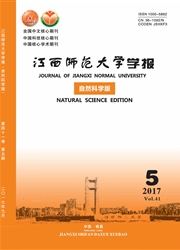

 中文摘要:
中文摘要:
通过NCBI查找到罗氏沼虾原肌球蛋白的mRNA,根据其CDS区域设计特异引物,通过反转录聚合酶链反应(RT-PCR)克隆出目的基因片段,测序后将该片段克隆到原核表达载体pET-28a上,转化到E.coliBL21(DE3)和E.coli Rosatta后,经异丙基-B-D-硫代乳糖苷(IPTG)诱导表达,用Ni2+亲和层析柱对重组变应原进行纯化.采用免疫印迹检测其与对虾过敏患者血清的IgE结合活性.对罗氏沼虾变应原进行了表达、鉴定及纯化,成功地获得了具有变应原活性的重组罗氏沼虾原肌球蛋白,为罗氏沼虾过敏性疾病的诊断、治疗奠定了基础.
 英文摘要:
英文摘要:
Bioinformatic method was used for the comparative analysis of numerous homologous animal food tropomyosin sequences.Conservative domains among the sequences were determined for degenerate primer de-signing. The RT-PCR was applied to clone the full length allergen genes from Macrobrachium rosenbergii and the sequences were analyzed.The specific primers were designed, The complete coding cDNA sequence including the start and the stop codons of tropomyosin of Macrobrachium rosenbergii was subcloned into the expression vector pET 28a. Expression of the recombinant Macrobrachium rosenbergii tropomyosin was carried out in Escherichia coli BL21 (DE3) and the purification of the recombin ant protein was performed viaaffinity chromatography with Ni2+ coupled to sepharose. Protein from E.coli lysate and purified recombinant tropomyosin were analyzed by SDS-PAGE. IgE reactivity of recombinant Macrobrachium rosenbergii tropomyosin was investigated by Western-blotting. The recombinant Macrobrachium rosenbergii tropomyosin with good allergenicity in this study was obtained, which would be used as a base for further study on Macrobrachium rosenbergii related allergy.
 同期刊论文项目
同期刊论文项目
 同项目期刊论文
同项目期刊论文
 期刊信息
期刊信息
